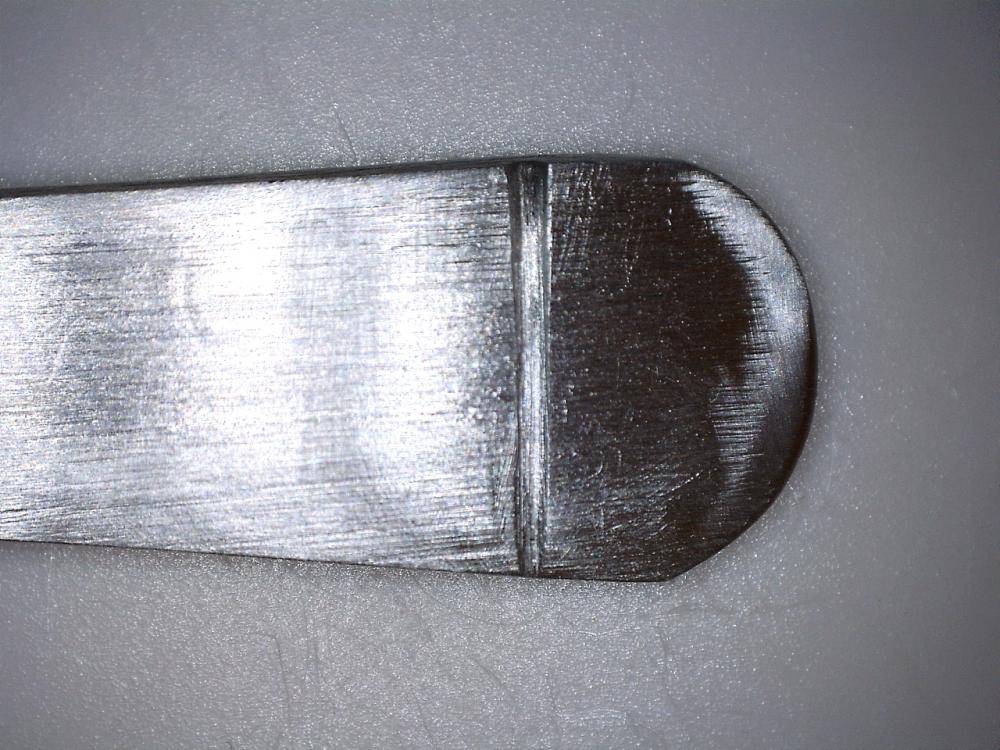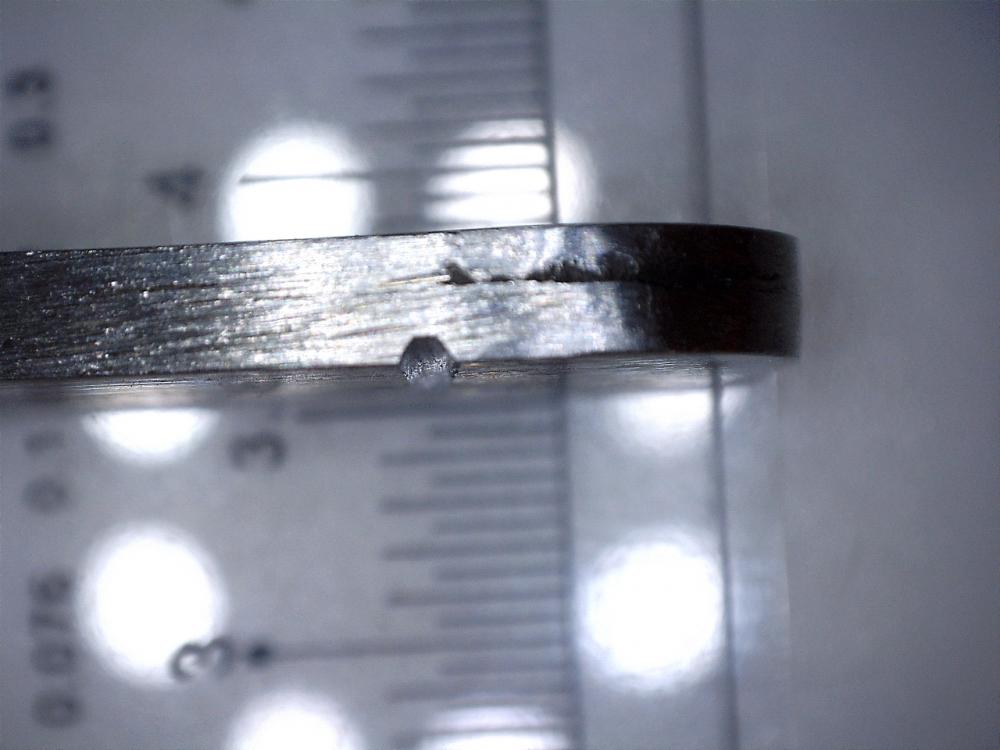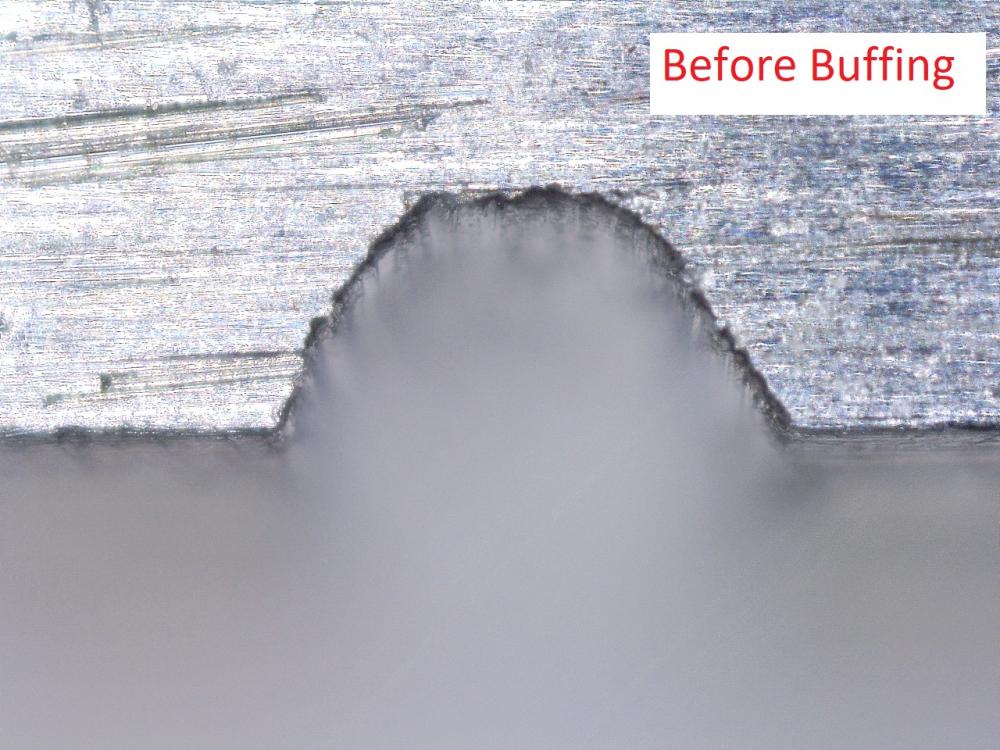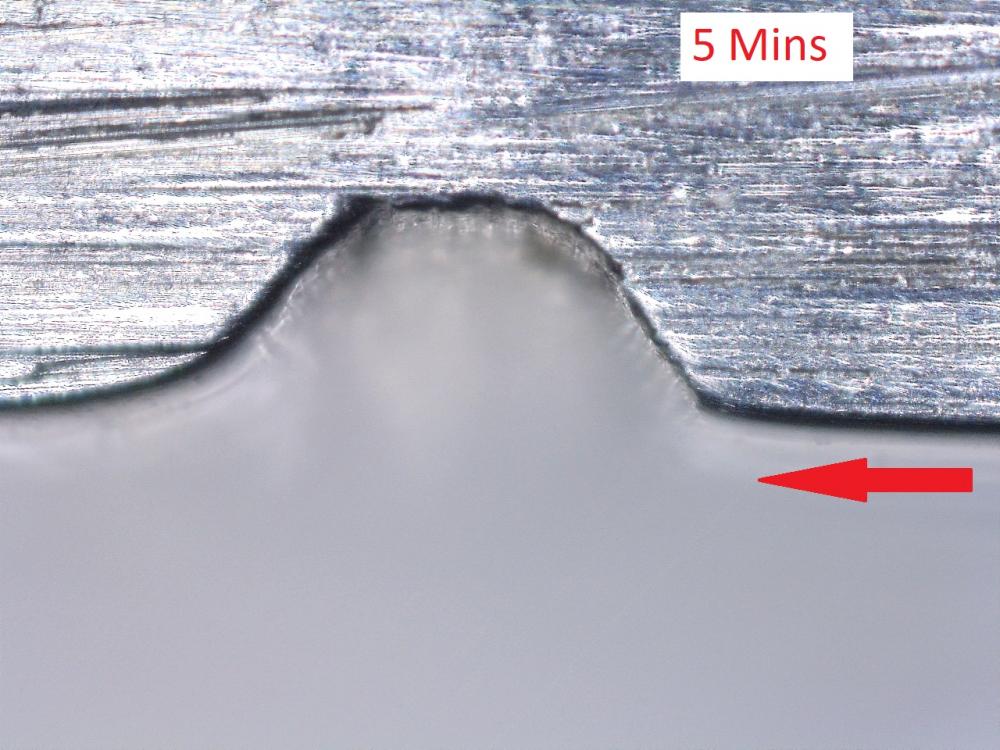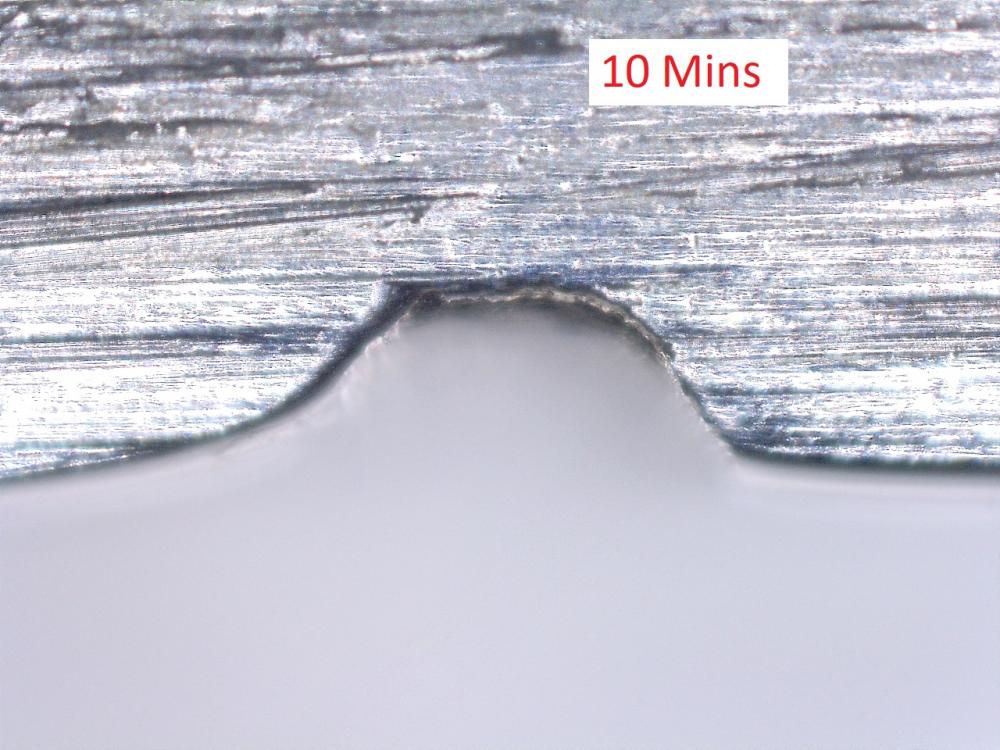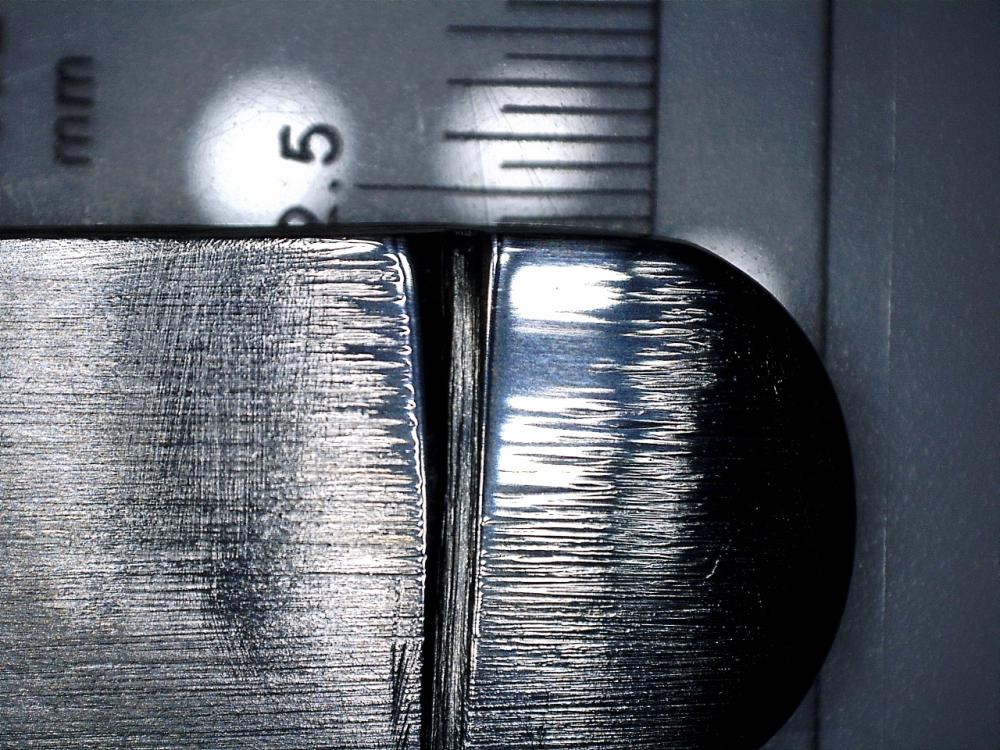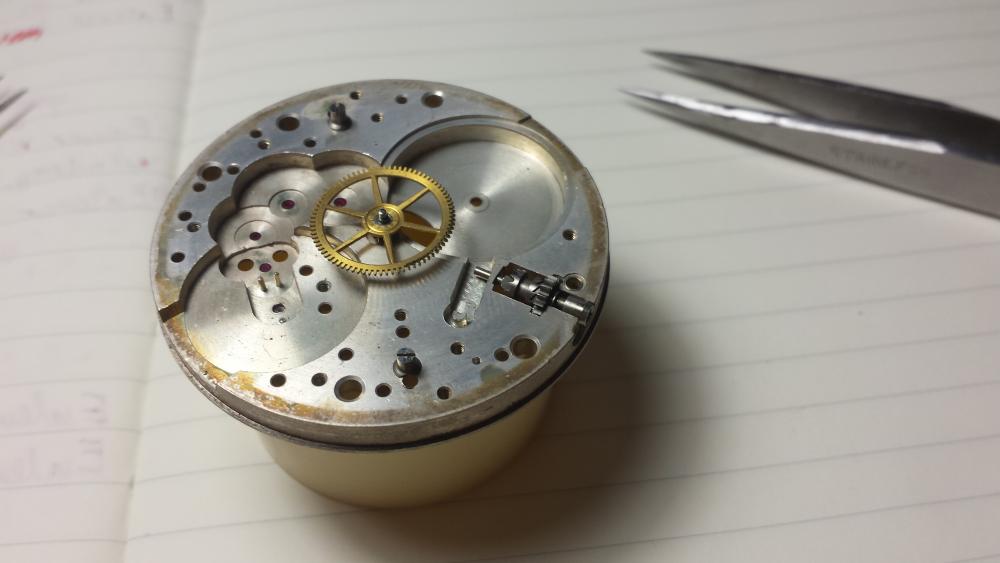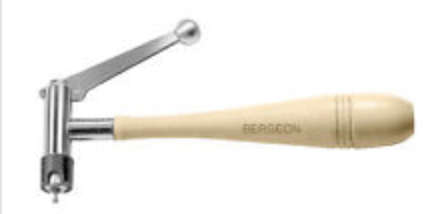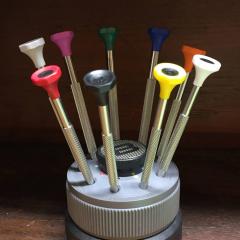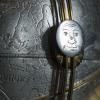Leaderboard
Popular Content
Showing content with the highest reputation on 11/03/17 in all areas
-
As an engineer and a skeptic, I've never been convinced by the "moving metal" theory ... so I thought I'd try a little experiment : Note that I only have a hand held "Dremel" type device. I used Dialux Orange, and a hard felt disk. I filed a groove in to the handle of some stainless steel tweezers. It looks to be about 0.5 mm wide and deep. I figured that if I applied the felt disk to one side of the groove, if metal is being moved, a lip should form on that side. After 5 mins of buffing, trying to apply enough pressure to heat the metal (it did get too hot to touch) you can see the results. The wheel is turning in the direction of the red arrow. No lip has formed, and both edges are worn. After 10 mins, still no lip, but significantly more wear. The thickness at the groove decreased from about 2.65 mm to 2.60 mm Conclusion. Metal is not being moved, it is being removed. Maybe someone with proper desk mounted wheels could repeat the experiment to generate more heat and pressure.5 points
-
I was originally writing this as a response to another post but felt it was going a bit off topic and detracted from the OP's question so I have started another thread. The post that inspired this one is here. In the absence of any explanation being offered regarding the mechanics of the claim that buffing was a process that removed less material than grinding to achieve the same result by moving metal around to fill a dent in, and given that to me this isn't already well known I decided to spend some time with Google in order to try and secure a better understanding of buffing and polishing. After an hour or so of reading all about buffing wheels, compounds and processes I have to say that nothing that I read from the metals finishing industry or the suppliers of materials to that industry made any reference to the process of buffing moving metal around. There seems to be a concensus that both buffing and polishing are primarily abrasive processes, and that the differences between the two are that: polishing usually involves an abrasive that is bonded to a substrate (paper or cloth for instance) where as buffing involves a loose abrasive in a greasy or waxy carrier which is applied to a wheel, mop, or strop; polishing is generally the more aggressive process using coarser compounds and is what you do to remove scratches and surface irregularities prior to buffing to achieve the final finish. There also seems to be a suggestion that the heat generated by buffing is at best inconsequential and at worst could be detrimental to the process. I do not claim that my research was exhaustive but it was certainly sufficient for me to conclude that this moving metal around theory is not widely held. I watched the video "Introduction to Buffing and Polishing" linked in the other thread to see how the magic worked. Two things occurred to me. One was that the terminologly was reversed; the process of removing the surface irregularities was referred to as buffing, the final finishing was referred to as polishing. This was at odds to everything that I had just read which was a bit confusing. The second was that if that were my watch I would be very disappointed with the result. This is the case before the buffing starts. Notice the sharp crisp form of the angle where the side meets the bottom of the case. This is after buffing and before polishing. And this is the end result after polishing. You could hardly ask for a finer example of over polishing and rounding out the original crisp lines of the case. This is the biggest drawback of buffing, the speed at which things can go too far and the proper contours can be destroyed make it a very risky process. I'm not saying that buffing can't be done in such a way as to preserve such detail, however the fact that a highly skilled instructor at one of the USA's most prestigious watch schools produces a result like this in a demonstration video shows just how easy it is to screw it up. Using good quality wet/dry paper in grades from 180 grit to 2500 grit double sided taped to a lollipop stick, followed by AutoSol on a rag and then a Selvyt cloth I could have (and indeed have) achieved just as high a polish AND retained the crisp sharp line, and would wager that the difference in the amount of metal removed would be immeasurable if not non-existent. The drawback of hand refinishing is time. It would probably take me a couple of hours with the wet/dry as opposed to the 25 minutes on the buffing wheel, and that I believe is the primary reason that watch schools teach buffing in preference to hand finishing where ever they can. The watch schools don't just teach watchmaking mechanics, they also provide a grounding in running a watchmaking/repair business, and good business sense says that there is more profit to be made in achieving a good finish in 25 minutes than there is in spending 2 hours getting it perfect, especially if the average customer can't spot the difference. It is interesting to note that the really high end watchmakers put the emphasis squarely back on the merits of hand finishing. I recall watching a Roger Smith video in which he took 2 weeks to make and finish just one pair of hands. They were perfect though.3 points
-
The Bergeon 30209 is a useful piece of kit to have in your armoury but it has 2 significant limitations. It can only be used on through holes as it has to be in contact with both ends of the broken off screw. If the screw is in a blind hole it can't be used. At ~£76 plus postage it suffers from severe "Bergeonitis". It's an expensive piece of kit to have sitting in your draw on the off chance that you're faced with a situation that can't be addressed with alum. I was lucky, I found mine at a car boot sale for less than £1 (for my £1 I picked up the 30209, a very nice canon pinion tightener, and something else I can't remember what) minus the runners. It took me all of about 5 mins to knock up a set of runners out of blue pivot steel on the lathe, and in 5 years I have only used it about 3 times; on that basis I could not have justified the cost of new. It is however a very simple concept and could make a very nice DIY project for someone with some basic kit. If pushed I reckon I could make a workable version from scratch using basic hand tools and perhaps a pillar drill. @jnash I think that if that steel insert is blind drilled then you best option is probably to use a very sharp graver point to try and key into the top of the screw to turn it. So long as the bottom of the screw isn't jammed hard into the end of the blind hole, in other words if it sheared because underside of the head was hard against the top of the insert, and there is no corrosion causing the threads to bind, then you have a good chance of success. If however it is binding then hot/cold, penetrating fluid may be you're only option short of either drilling out the screw or even replacing the steel insert altogether.2 points
-
Can't see the pictures in the first post, but here's my take (17 years watchmaker, 9 years with rlx) Polishing any metal except platinum removes material.. polishing is the act of replacing deep scratches with small scratches, then replacing those with smaller etc etc, A buff with compound is just a very soft grinding wheel For flat surfaces, you can't maintain a flat surface with repeated use of buffing wheels, or hand held emery papers, in the case of rlx professional models, either a linishing belt or lapping disc is used to maintain the flats. In the case of platinum material is moved around by buffing, though there is grinding as well.. Tom2 points
-
1 point
-
1 point
-
You can use the "presto" type hand removing tool as a cheaper alternative to a dedicated cannon pinion remover. It will pull the cannon pinion very neatly and will be a vertical pull, no risk of damage to the centre wheel arbour. You can dress the jaws of the tool for a perfect fit, they are only a couple of pounds from China. I have a Bergeon cannon pinion removal tool, but still sometime use a presto tool as the Bergeon does not work on small cannon pinions. Whilst tweezers will work, I think they are not ideal as you risk putting some stress on the centre wheel.1 point
-
£70 may be better than crimping the pinion while trying to pull it off and then having to either buy another one if still available or spend some effort in restoring it. Good luck! Sent from my iPhone using Tapatalk1 point
-
I've just posted the results of a little experiment I did on whether buffing moves or removes metal. It's posted under : Buffing; Myth or Fact?1 point
-
the broken screw extraction has been very well covered in the "posts". "Bergenitis" is a good very topic. vin1 point
-
1 point
-
@FlyingWatchmaker I had issues with the pics not posting in the first post but they are there in the second post. As both you and @anilv suggested the best way to go is undoubtedly proper linishers or lapping discs combined with dedicated jigs, and there are some truly stunning results to be seen in various forums achieved using this approach. Hand finishing, if done with care, can get close to these results providing there is no complex graining that needs to be reproduced, and as such it would be quite wrong to dismiss the process as something that should never be done to a watch. Machine buffing certainly has its place, and in the right hands can produce some excellent results, but as I stated above, the speed at which things can go wrong makes it very high risk. To me though the argument that buffing is better than abrading (polishing, grinding, lapping, etc) on the grounds that it achieves the same result with less removal of material by moving the metal around is not convincing. I have been unable to find a description of a mechanism that can explain the process in credible metallurgical terms, and none has been offered by supporters of this theory. To me it defies common sense, except perhaps if the effect is on such a nanoscopic scale as to be insignificant.1 point
-
I am not convinced that when I have used the buffing method it has actually moved metal. I suspect it has removed small amounts of metal but during this process has polished giving a very nice and desired effect. However as I have stated in a previous post the removed metal/buffing wax spreads in the air and settles over a large area. I only have a small workshop and therefore I now only polish. I inform any prospective customers of this before a service.1 point
-
Marc, thank you for taking the time and effort to compile a post that clearly describes the effects of buffing on a watch case. If that case had been mine, I would have been furious with the result! The case in the video could have been refinished correctly, but the time required to do so would not have been cost effective for someone in business. I use the same method (which I believe I have touched on before in the forum) as you do and have done for years with truly excellent results.1 point
-
Succinctly put Geo. @bojan1990 patience is the key. Each time you move up a grade you have to make sure that you remove all of the marks made by the previous grade before going up again. Use good quality wet/dry paper with water to help prevent clogging, and rinse the piece thoroughly between grades to ensure that there are no loose particles from the previous paper to foul the subsequent step. You shouldn't really need to go above 2500 grit, after which switch to a polish like Solvol AutoSol on a soft rag and keep going until you get a deep lustre, then if you really want a top finish buff it up with a red Selvyt cloth. It works for me every time. You can speed things up using a Dremel with a soft mop when you get to the Solvol stage but be careful to preserve the contours and lines of the case. They can disappear very fast and then they're gone.1 point
-
Well, this is truly exasperating. This is just something I know. I cannot make you know it. But I do know it. Any skepticism from those who do not falls short from that vantage point. So much about the broader subject of buffing/polishing/burnishing/finishing is ineffable, I've experienced that time and time again, and of all the people I've known who could do it, and obviously had a lot of knowledge, very few of them could convey more than the least thing about it. And I'm obviously not very good at that either.1 point
-
1 point
-
yeah, I had seen that video awhile ago. I don't think there is anything there indicating material had moved other than his claim of it . I think he's very skilled but that doesn't mean the metallurgical explanation is accurate. I was glad to see it raised here as it is so against the grain of engineering and metallurgy I was hoping for something more on why its "proven" or even how its suppose to work. I confess I don't believe it and I've done lots of buffing, but if its true there should be proof or even a good scientific explanation and I will admit the errors of my ways. If the claim is you're moving material about by buffing , are you able to take a piece and make it thicker in a spot and measure it? That would be very compelling if so1 point




.thumb.jpg.19e73f5faacf2baf971e287c07d43e08.jpg)
